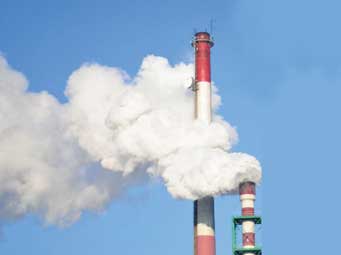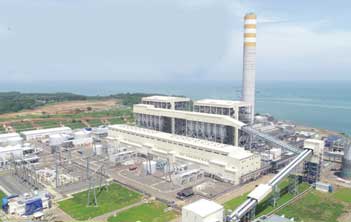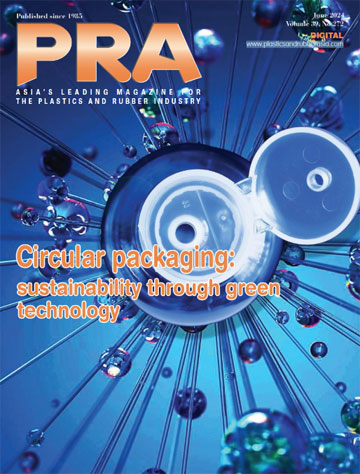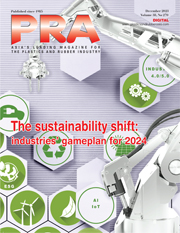Energy Sector: Renewable energy gains momentum in ASEAN countries
The region’s economic growth is fuelling an unprecedented demand for reliable and abundant energy to support its expanding industries, says Angelica Buan in this report.
As the Asia-Pacific region expands its economic footprint, securing reliable and abundant energy sources is vital. In ASEAN, rising energy demand is driven by population growth, urbanisation, and industrialisation. Rising industrial activity also intensifies the need to meet growing energy demands while balancing sustainability.

The International Renewable Energy Agency (IRENA) in its “Renewable Energy Outlook for ASEAN” report says that the region will experience a 4% annual growth in energy demand until 2025, resulting in a 50% increase from 2014 levels.
Electricity demand alone is projected to double between 2014-2025. To address this growing demand, ASEAN continues to rely on limited domestic fossil fuel resources, leading to a greater dependence on imported fossil fuels.
Rising demand for fossil fuels is also increasing carbon emissions, which contributes to air pollution. Energy-related emissions are projected to rise by 61%, reaching over 2.2 Gt/year by 2025.
To address this, ASEAN aims to decarbonise emissions-intensive sectors such as transport, industry, construction, manufacturing, and energy. The region is targeting to source 23% of its primary energy from modern, sustainable renewables by 2025, even as overall energy demand continues to grow significantly.
Despite the dominance of fossil fuels, transitioning to renewable energy sources is increasingly a priority among ASEAN nations. Key technologies such as green hydrogen, carbon capture utilisation and storage (CCUS), smart grids, offshore wind, and energy storage, along with expanded use of solar, wind, geothermal, and ocean energies, will be critical for achieving net-zero emissions.
Breaking free from coal use

Coal dominates the Asian energy mix, making up 57% of electricity generation due to rising demand. The International Energy Agency (IEA) reports that China alone consumes 50% of the world's coal output and with India, Indonesia, Vietnam, and the Philippines, accounting for over 70% of global coal demand.
However, coal’s contribution to greenhouse gas emissions (GHG) compels countries to transition away from coal. Reducing coal use is imperative for limiting global warming to 1.5°C. Despite this urgency, completely abandoning coal remains a challenge.
Reports indicate that while coal use is expected to peak and then decline, coal power plants continue to supply energy to factories, industries, and households due to their low cost and availability.
On a brighter note, ASEAN nations are shifting away from coal in favour of cleaner energy alternatives. The region's commitment to reducing carbon emissions and addressing air pollution and climate change is driving this transition toward renewable energy and sustainable growth.
Indonesia: dominance in geothermal energy capability
According to the IEA, ASEAN’s coal demand surged by 13% to 413 million tonnes in 2022, with Indonesia accounting for nearly half of this total. Power generation consumed 71% of this coal. Demand is expected to increase to 528 million tonnes by 2026, largely driven by Indonesia's growing consumption, with a rise to 444 million tonnes projected for 2023.

In 2023, Indonesia became the fifth-largest coal generator globally, surpassing South Korea, according to Ember Climate data. Indonesia’s coal generation surged by 74% from 125 TWh in 2015 to 217 TWh in 2023, with a 7.1% annual growth rate. This growth has propelled Indonesia from eleventh to fifth place, overtaking powerhouse economies like Germany, Russia, Australia, and South Africa.
New coal-fired plants are focused on supporting nickel production, vital for electric vehicle batteries and steel.
Indonesia, with 42% of the world's nickel reserves and substantial copper, gold, and tin, is investing in expanding nickel production to meet rising global demand.
Regarding renewable energy, Indonesia aims for 23% of its energy mix by 2025 and 31% by 2050, as noted by the Minister of Energy and Mineral Resources at the 2022 IEA Clean Energy Transitions Summit.
According to Energy Tracker Asia, Indonesia ranks among the top five Asia-Pacific countries for renewable energy capacity, with 16 geothermal power plants operating across the country. These plants, with capacities ranging from 2.5 MW to 377 MW, are predominantly located in Java and Sumatra. Hydropower and geothermal plants currently contribute 8% and 5% to the country's energy mix, respectively.
The Asian Development Bank (ADB) has provided a boost to Indonesia to maximise its geothermal energy potential, estimated at 29 GW, and its second-largest installed capacity of 2.1 GW. ADB extended a US$300 million loan to PT Geo Dipa Energi (GDE), a state-owned geothermal developer, to expand geothermal power generation by 110 MW in Java. Additionally, ADB will oversee a US$35 million loan from the Clean Technology Fund for this project.
The geothermal power generation project will support the construction of two plants, including one in Patuha, West Java. This initiative aims to enhance GDE’s capabilities in planning and executing geothermal projects and conducting governmentsupported drilling, thereby attracting private sector investment to develop new geothermal sites.
Meanwhile, GDE recently secured a EUR825,000 grant from Germany’s Kreditanstalt für Wiederaufbau Bankengruppe (KfW), for drilling two temperature core holes in the Candi Umbul Telemoyo geothermal working area in Central Java, Indonesia.
(PRA)SUBSCRIBE to Get the Latest Updates from PRA Click Here»







